The best way by far to see the Galapagos Islands in all their glory is on a luxury, small-ship expedition yacht. And if it happens to be on the only Relais & Chateaux vessels in the Galapagos, with the lowest guest to guide ratio on offer, so much the better!
The vast majority of the islands that make up this extraordinary archipelago are uninhabited by people, hosting instead a dizzying array of wildlife, from sunbathing sealions and iguanas to ancient giant tortoises, as well as wonderful mix of birdlife.
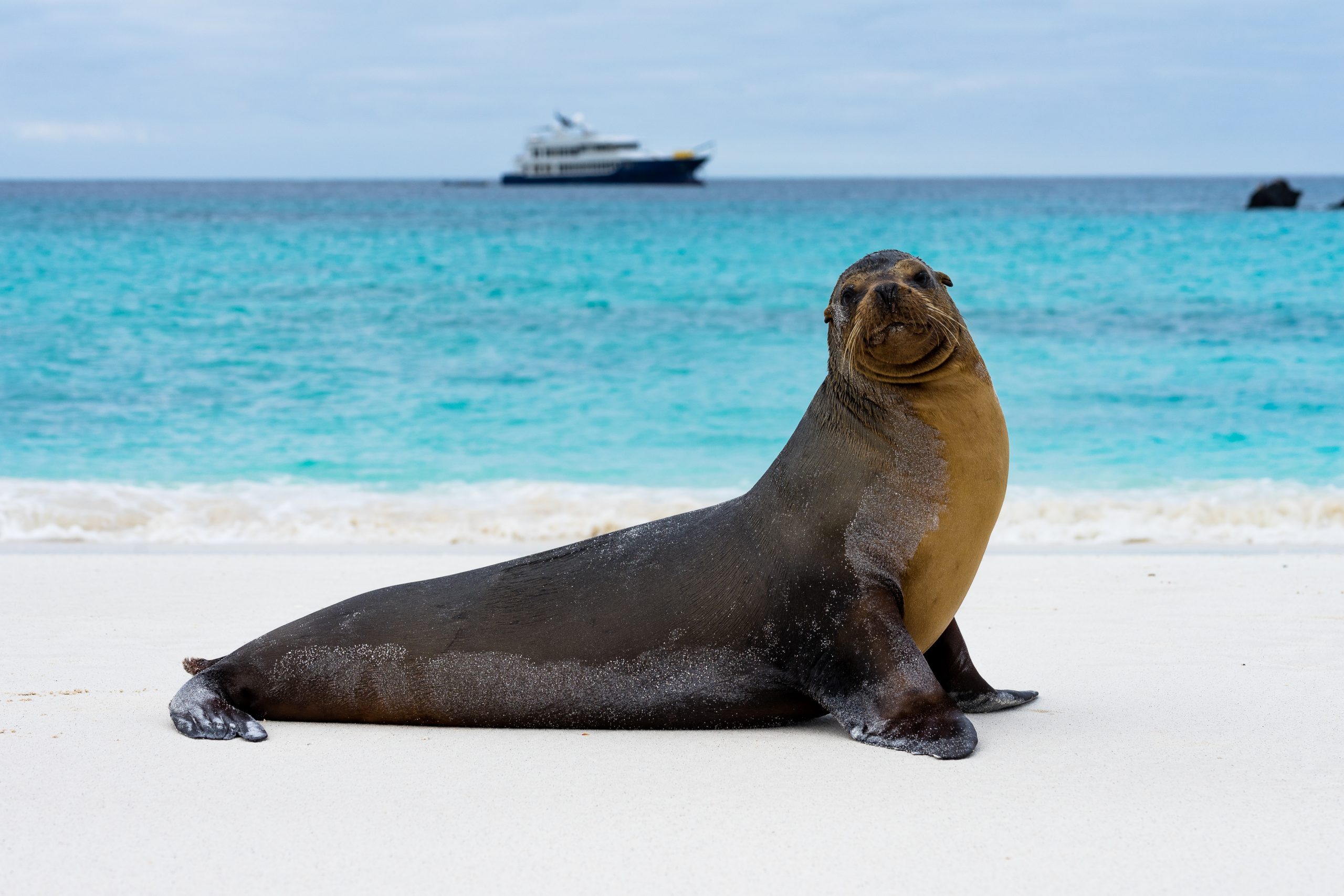
As a result, a week long cruise winding through these islands is undoubtedly the best way to see everything the islands have to offer, allowing visitors to see and experience places no land-based visitor could ever hope to reach.
Visiting the islands by vessel is also ideal for snorkelling, stand up paddle boarding, kayak and zodiac trips, meaning visitors can also explore the bays and beaches – and the underwater life that thrive in this growing marine reserve – with minimal fuss.
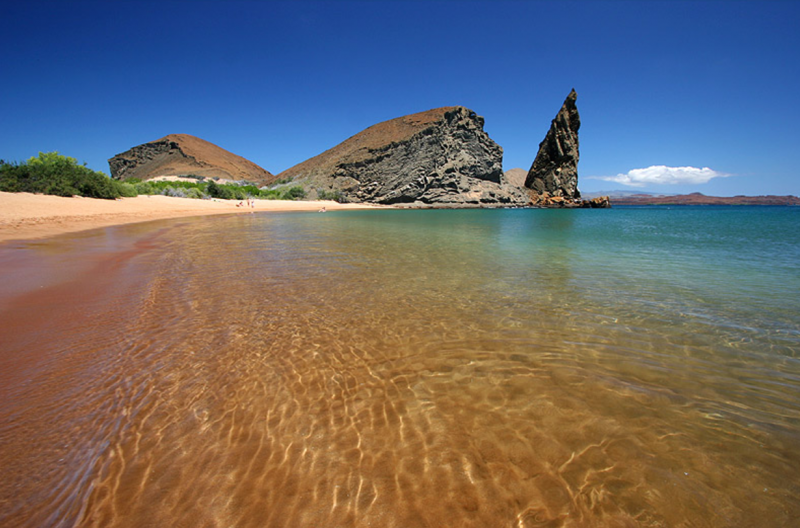
So whilst choosing to visit the Galapagos on one our luxury yachts Origin or Theory is one of the easiest decisions you’ll ever make, there is one choice that might prove more of a quandary.
Our vessels alternate between two week-long itineraries; one covers the Southern and Central Islands, whilst the other takes visitors Northern and Western part of the archipelago. The question is, which one is best for you?
Itinerary A ‘Beaches and Bays’ (Southern and Central)
The islands that make up the Southern part of the Galapagos are the oldest in the archipelago, formed from volcanic uplift many years ago and weathered over the years.
Famous for their spectacular birdlife, including the world’s only breeding site of Waved Albatross on Española Island, as well as iconic blue-footed and Nazca boobies, this itinerary is great for birdwatchers and budding ornithologists. Darwin’s theories of evolution, developed whilst in the Galapagos in 1835, were inspired by his studies of the Galapagos finches, and visitors today can still spot Large-beaked Ground Finch and Large Cactus Finch on these southern islands.
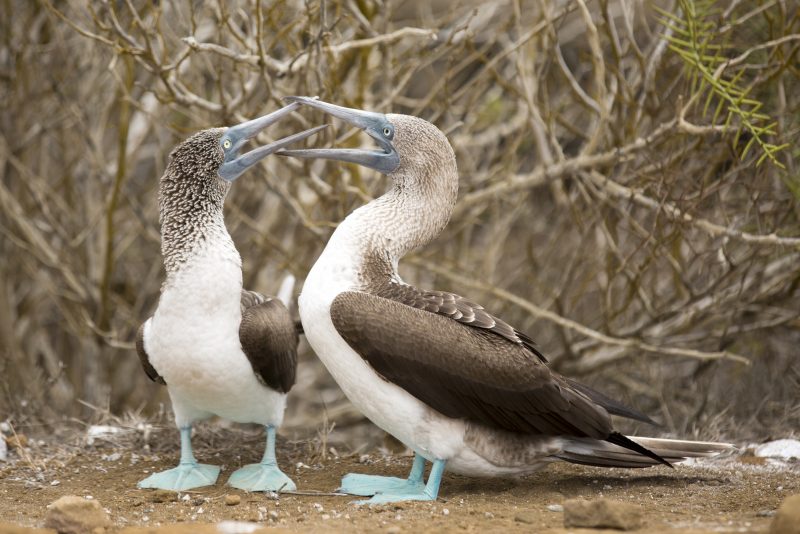
But it isn’t just birdwatching that makes this itinerary so memorable. Taking in some of the Galapagos’ finest beaches, this route is perfect for people looking to relax and unwind in long stretches of soft, pale sand, with a harem of sealions or scampering Sally-Lightfoot Crab to share them with.
Swimming with Sea Turtles, Galápagos Penguins and Sealions is a regular feature, and guests can also snorkel at Devil’s Crown with white-tipped reef sharks.

A trip to Floreana Island takes in Post Office Bay – home to the oldest post box anywhere in the Galapagos – and you’ll see the iconic Blue-footed Booby, the ultimate clown prince of the Galapagos.
The natural wonder of these islands is on show as well. South Plaza, an islet protected by tall cliffs, is home to the Opuntia prickly pear cactus and prehistoric land iguanas, whilst two species of frigatebirds, Great and Magnificent, call North Seymour home. A tall cliff is the perfect lookout point for swallow-tailed guls and red-billed tropicbirds.
Top it all off with a hike up the hill on Bartolome for one of the most spectacular views anywhere on the islands – that’s the famous Pinnacle Rock to the right – and you’d be hard-pressed to put together a more comprehensive rundown of Galapagos highlights to pack in to a one week voyage.
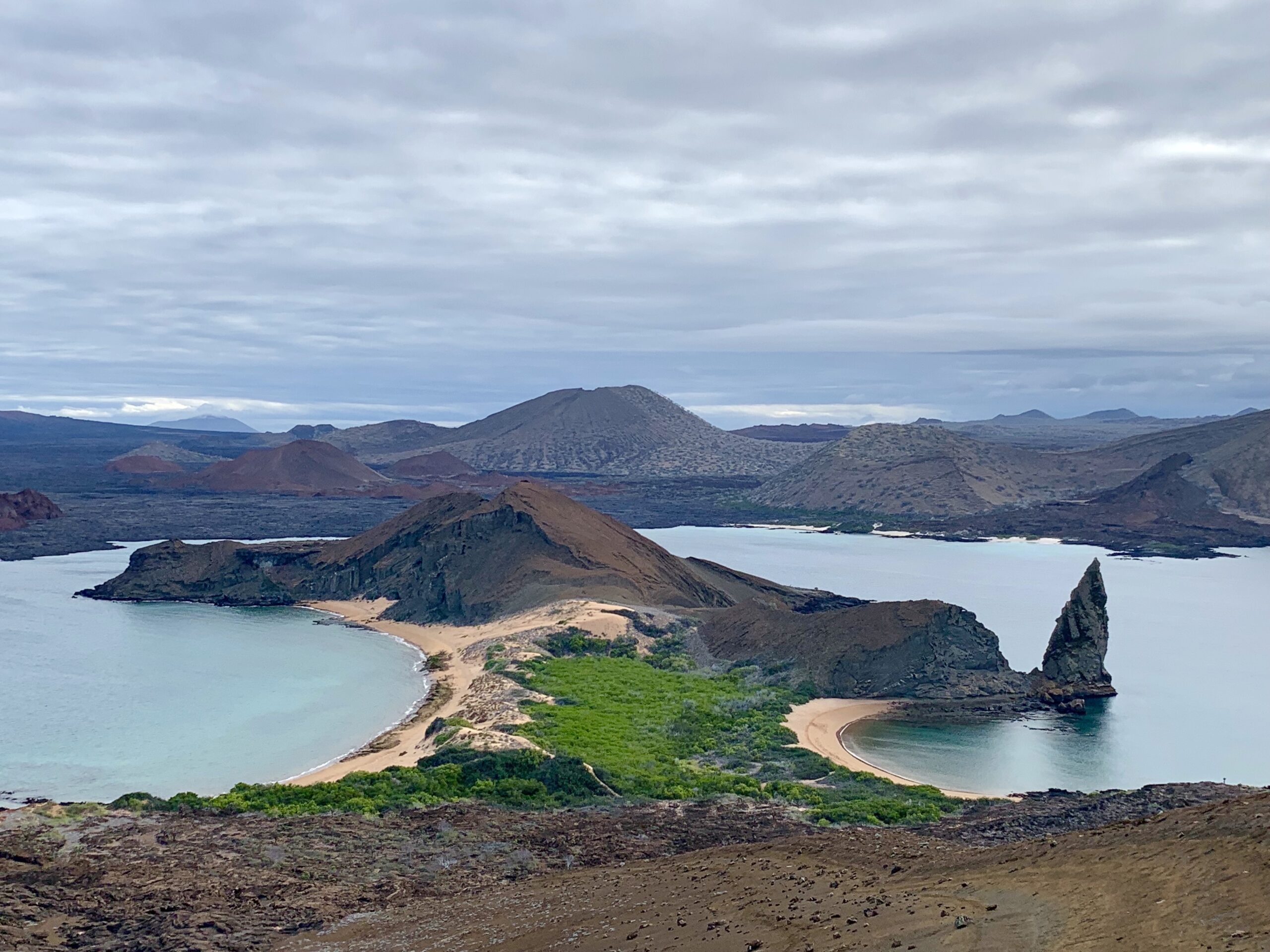
Itinerary B ‘Volcanic Wonders’ (Western and Northern)
But having said that, we may just have managed it.
Itinerary B takes in the Western and Northern isles, taking passengers up to Genovesa in the North, and far out to Fernandina in the West; no day-trippers venture this far, so you’re likely to have many of the more remote spots to yourself.
Visiting these younger, actively volcanic islands is a dramatic introduction to the Galapagos landscape. Lava formations, caves and fissures scatter the shorelines, which are being shaped to this day by regular eruptions; Wolf Volcano on Isabela erupted in January.
Trek across lava flows to visit huge volcanic lagoons whilst learning about the plate tectonics that have so actively formed these islands. Colourful beaches play testament to the archipelago’s volcanic past; the red, green and black sand each given its distinctive hue from mineral-rich lava flows from ages past.
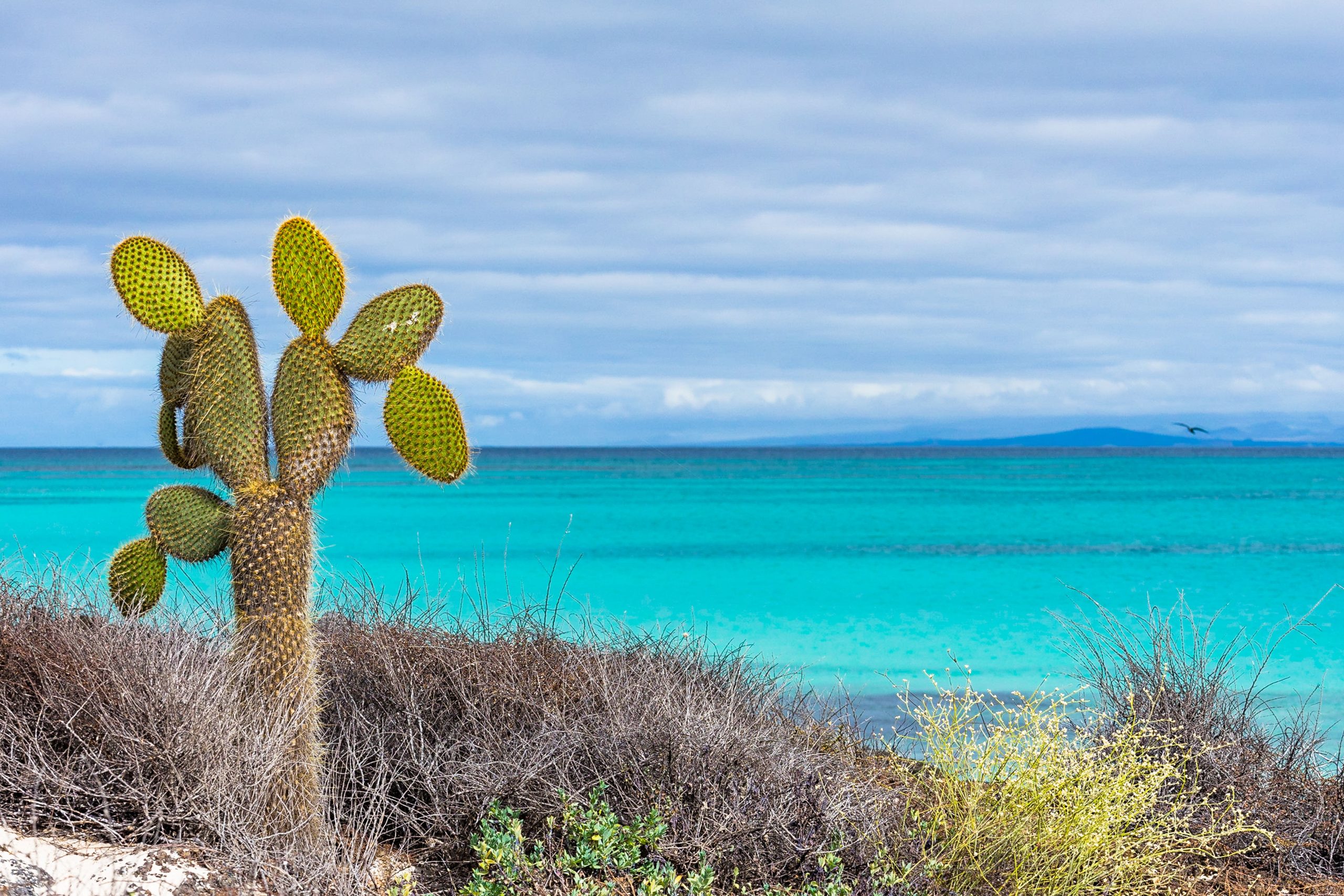
Whilst the stunning landscapes form a dramatic backdrop, most visitors who come to the Galapagos do so for the wildlife, and anyone on Itinerary B won’t be disappointed.
Isabela and Fernandina are home to the unique Flightless Cormorant – endemic not only to the Galapagos, but to these two islands – whilst Genovesa hosts masses of Red-footed Boobies and Great Frigatebirds. Swarms of Petrels fly over the island; keep your eyes peeled and you may just spot the Short-eared Owls that hunt them too.
Fernandina is also a haven to the largest colony of marine iguanas in the Galapagos, warming themselves along the rugged shoreline, blending in with the dark rocks beyond.
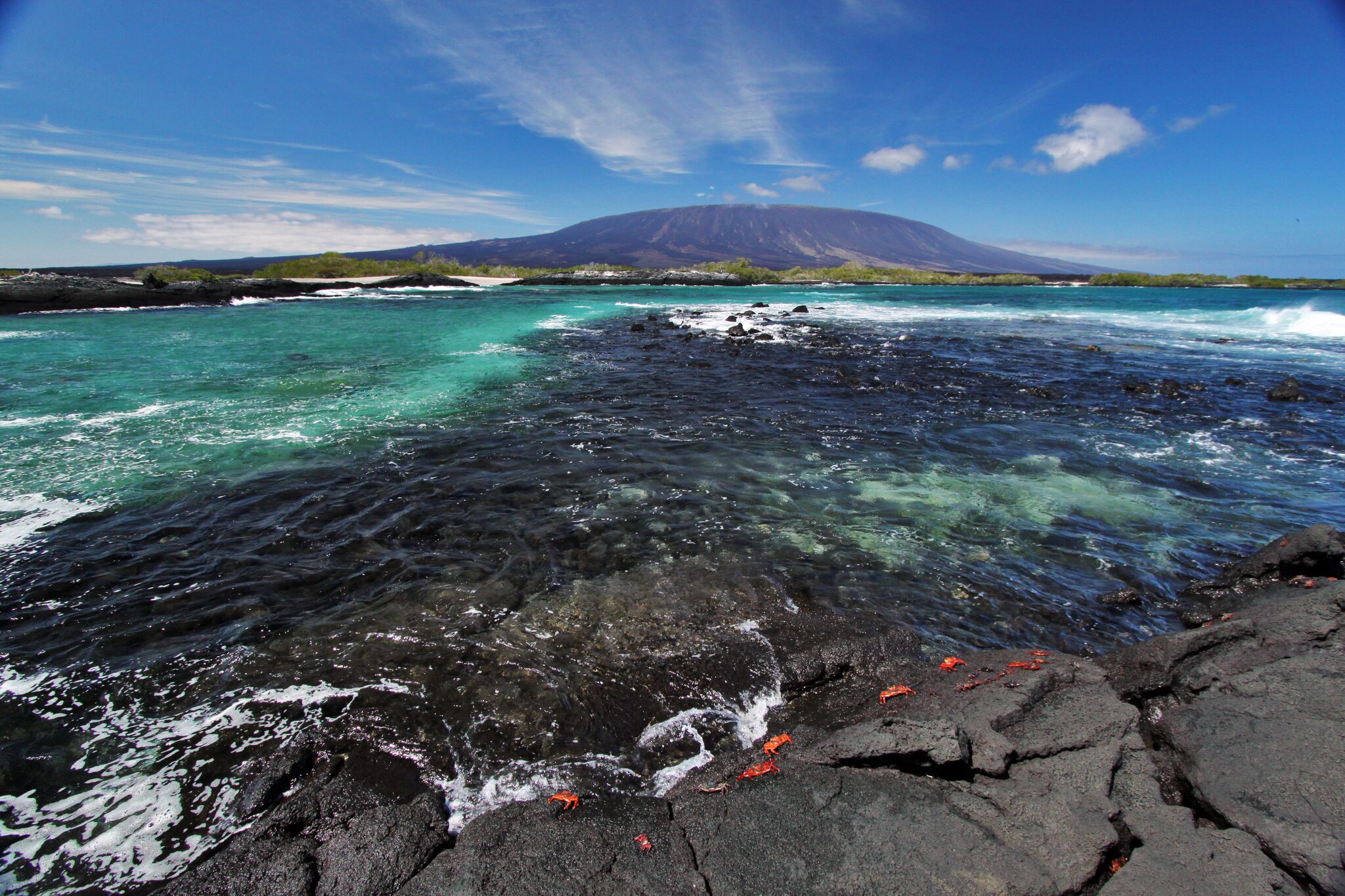
Snorkelling trips are a particular highlight on Itinerary B. Search for the elusive Mola Mola (Ocean Sunfish), one of the largest bony fishes in the world which can weigh well over 1,000kg. There’s a good chance you will see marine iguanas feeding, nibbling on algae beneath the waves, whilst on shore you can get up close to fur seals dozing on the beaches.
Given the cool, nutrient rich waters from the west, many visitors spot pods of dolphins riding the waves from the zodiacs, whilst whale spotting is a must from the yacht – the Bolivar channel is a particular favourite for breaching whales.
With pirate graffiti from the 1800s at Tagus Cove, wild tortoises and flamingos inland and turtles bobbing in the bays, Itinerary B offers something for everyone and is sure to leave you wanting more.
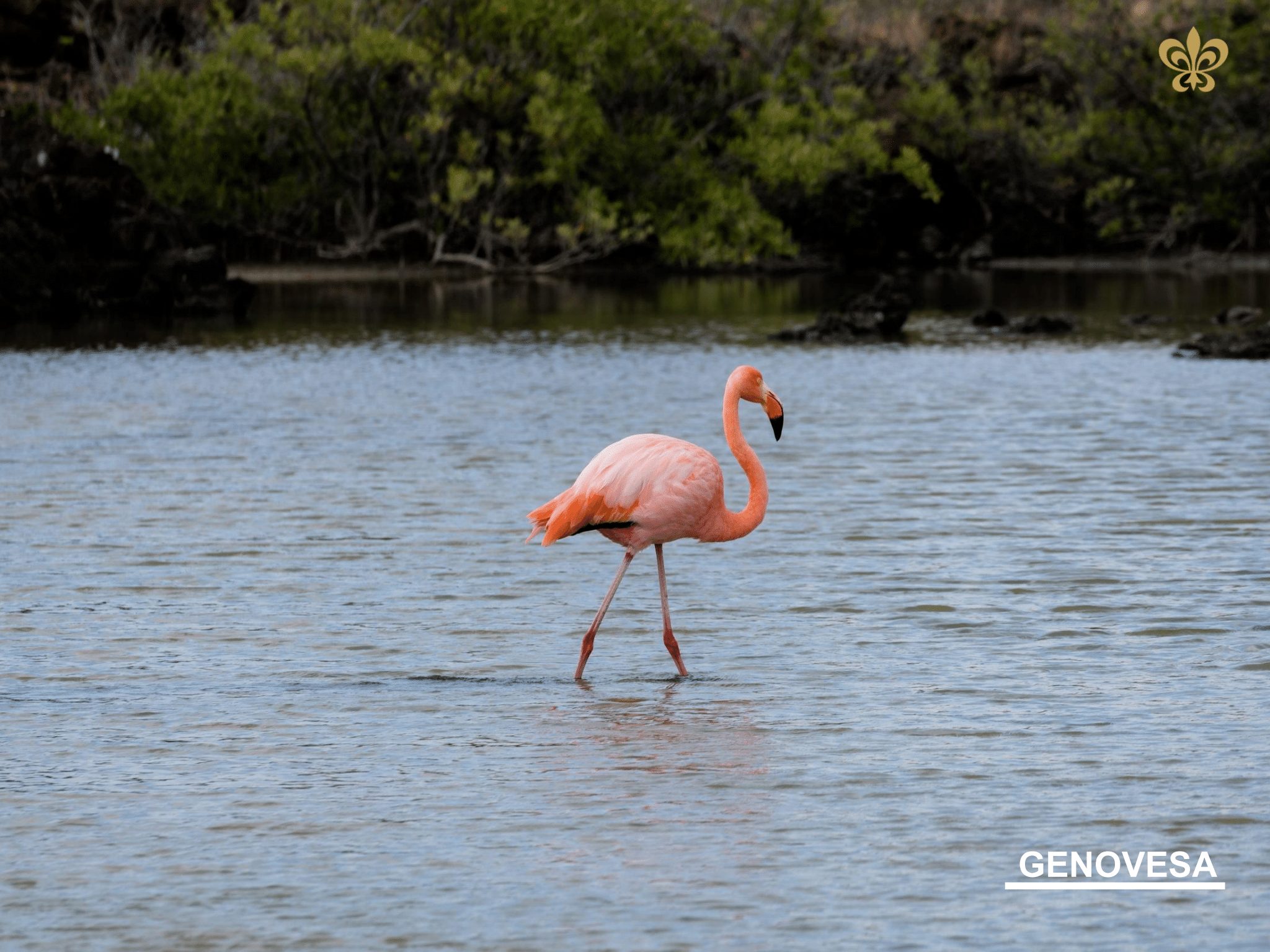
Whilst each itinerary has its own character, they have plenty in common too.
The remarkably rich and diverse wildlife in the Galapagos are on display on both trips, and with the exception of a handful of species (flightless cormorants and waved albatross), you have a great chance of seeing all of the favorites, from sealions and marine iguanas, to penguins and land iguanas, and the iconic giant tortoises on either itinerary.
And of course, the food, service and onboard experience will be identical whichever trip you choose, with the same excursions and activities (albeit to different places) available on both trips.
If you would like to discuss your options in more detail, feel free to get in touch with the team. And if you’re still struggling to decide which itinerary is the one for you, why not opt for both?




